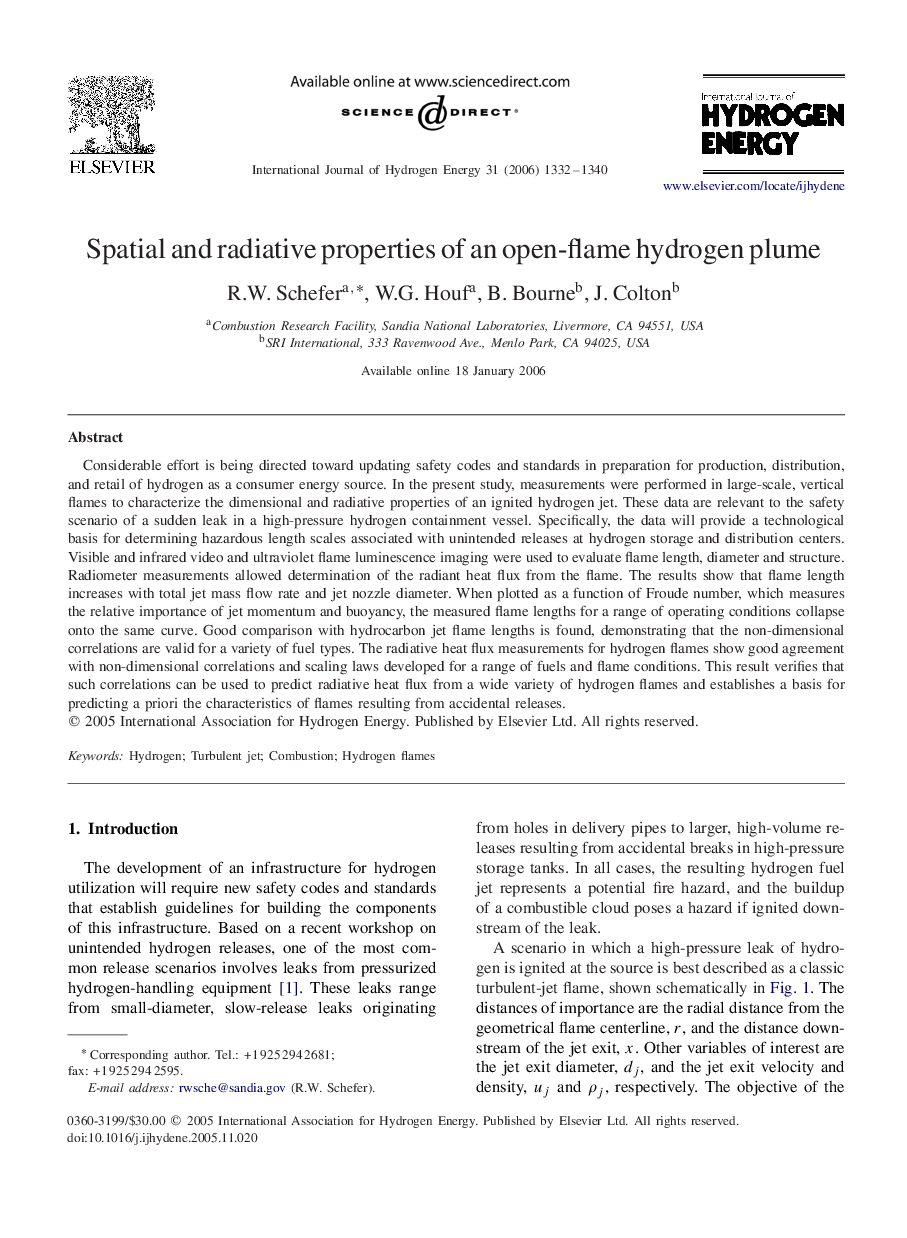| Article ID | Journal | Published Year | Pages | File Type |
|---|---|---|---|---|
| 1280520 | International Journal of Hydrogen Energy | 2006 | 9 Pages |
Considerable effort is being directed toward updating safety codes and standards in preparation for production, distribution, and retail of hydrogen as a consumer energy source. In the present study, measurements were performed in large-scale, vertical flames to characterize the dimensional and radiative properties of an ignited hydrogen jet. These data are relevant to the safety scenario of a sudden leak in a high-pressure hydrogen containment vessel. Specifically, the data will provide a technological basis for determining hazardous length scales associated with unintended releases at hydrogen storage and distribution centers. Visible and infrared video and ultraviolet flame luminescence imaging were used to evaluate flame length, diameter and structure. Radiometer measurements allowed determination of the radiant heat flux from the flame. The results show that flame length increases with total jet mass flow rate and jet nozzle diameter. When plotted as a function of Froude number, which measures the relative importance of jet momentum and buoyancy, the measured flame lengths for a range of operating conditions collapse onto the same curve. Good comparison with hydrocarbon jet flame lengths is found, demonstrating that the non-dimensional correlations are valid for a variety of fuel types. The radiative heat flux measurements for hydrogen flames show good agreement with non-dimensional correlations and scaling laws developed for a range of fuels and flame conditions. This result verifies that such correlations can be used to predict radiative heat flux from a wide variety of hydrogen flames and establishes a basis for predicting a priori the characteristics of flames resulting from accidental releases.
